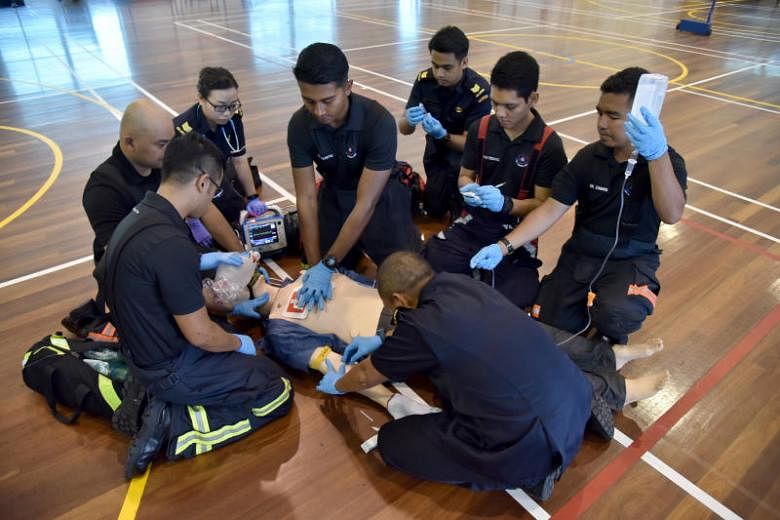SINGAPORE - From Monday (April 1), the Singapore Civil Defence Force (SCDF) will no longer convey non-emergency cases to hospital to free up resources for life-threatening cases.
In cases where paramedics arrive at the scene and assess that the patient does not need to be conveyed to a hospital, they may treat the patient and advise them to see their own doctor, said chief medical officer Shalini Arulanandam on Friday.
"If the patient wants to go to the hospital on their own accord, they can make their own arrangements or they can call 1777 for non-emergency conveyance," she said.
The SCDF will instead focus more resources on life-threatening cases that are critically time-sensitive by introducing "high-performance cardiopulmonary resuscitation (CPR)" in cases of cardiac arrest, with the aim of full implementation nationwide by March 2021.
Currently, four responders - three in an ambulance and one on a fire bike - are deployed to cardiac arrest cases, but this will be increased to eight with the addition of four responders on Red Rhino vehicles, fire engines or other fire medical vehicles.
Compared to standard CPR, high-performance CPR provides patients with higher chances of survival, said Lieutenant-Colonel (Dr) Shalini, with each responder in the team given a specific role in resuscitating the patient.
For example, two firefighters will take turns every two minutes to perform chest compressions on the patient, reducing responder fatigue that is common in standard CPR.
"The aim is to minimise the interruption to compressions and deliver good quality CPR with good ventilation, which will improve neurological outcomes and survival from cardiac arrest," said Lt-Col (Dr) Shalini.
The roll-out will begin with four fire stations and one fire post located across Singapore, as more firefighters are still being trained as certified emergency medical technicians. More than 300 firefighters have been certified since 2013, according to the SCDF.
Cardiovascular disease is a leading cause of death in Singapore, with an average of 2,300 cardiac arrests occurring outside hospitals annually. However, in 2015, only about one in five patients survived out-of-hospital cardiac arrests.
The SCDF sent a team to the Seattle Resuscitation Academy in the United States in 2016 to learn its best practices including the implementation of high-performance CPR.
The city of Seattle has one of the world's highest survival rates for out-of-hospital cardiac arrest at 56 per cent in 2017. In Tokyo, the survival rate was at nearly 30 per cent in 2015, while in Seoul it was 33 per cent.


